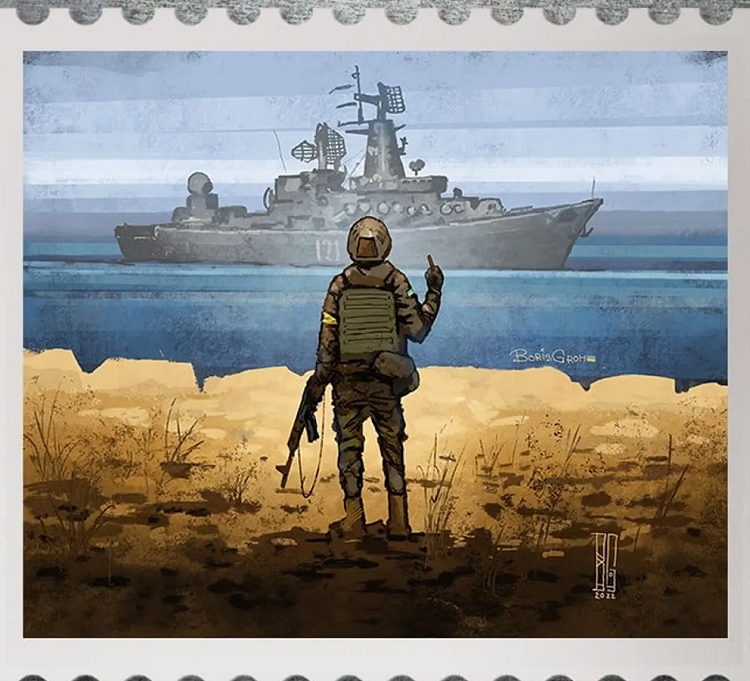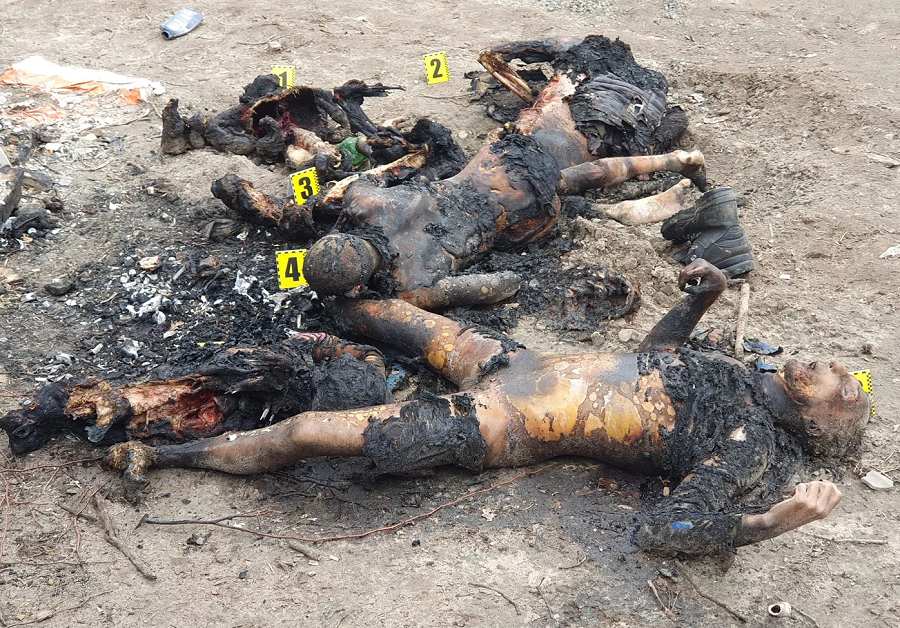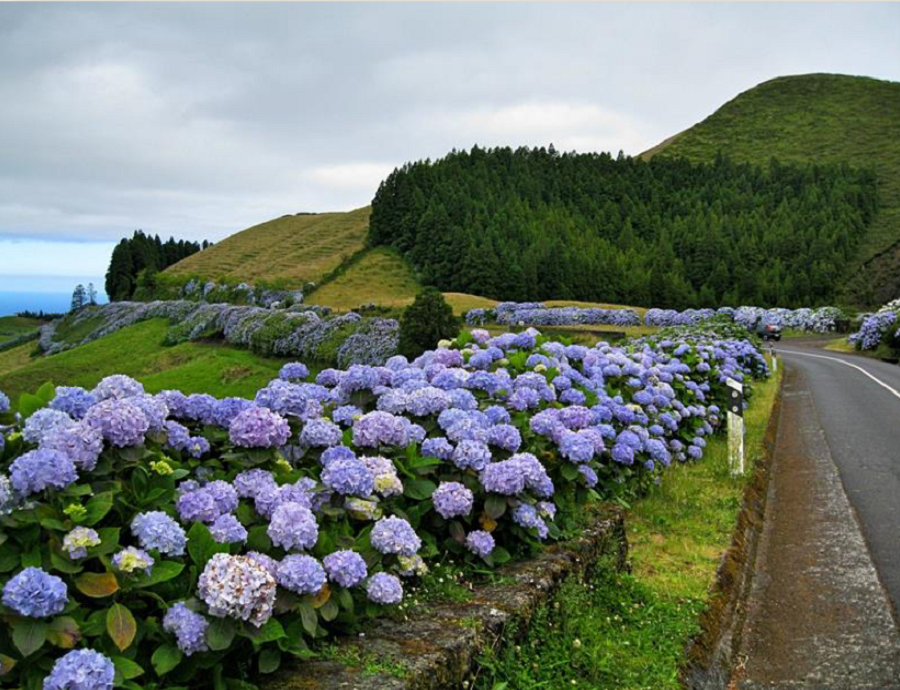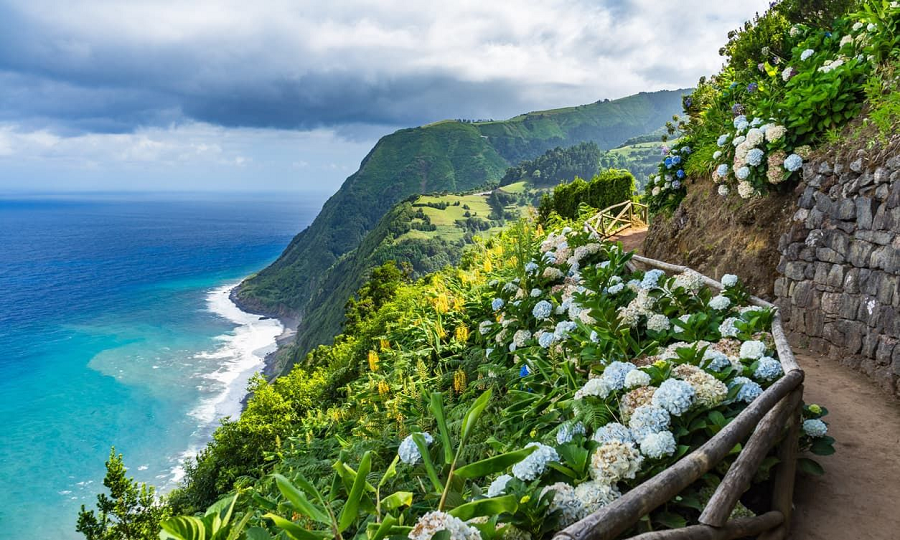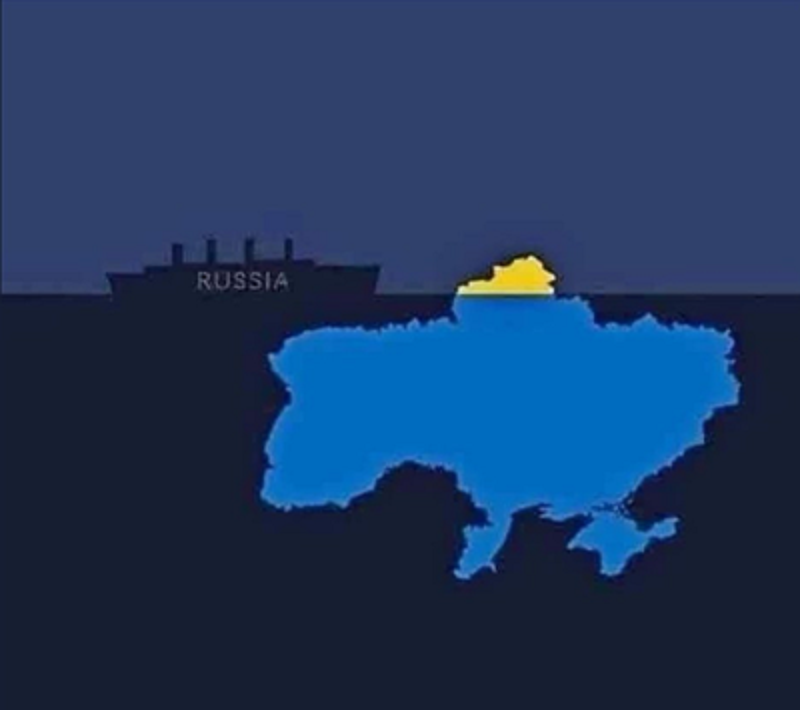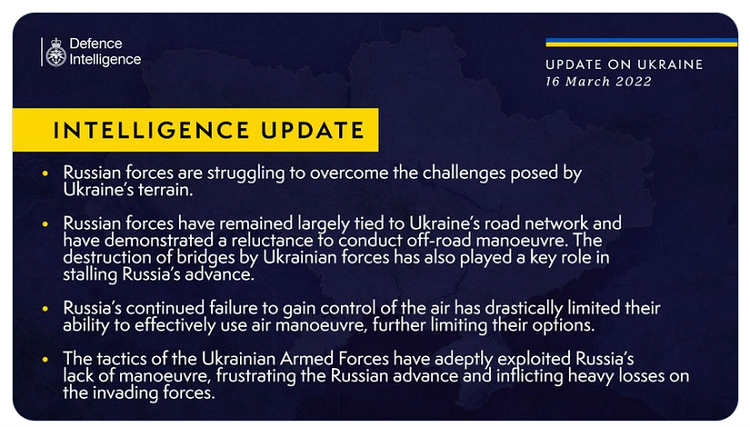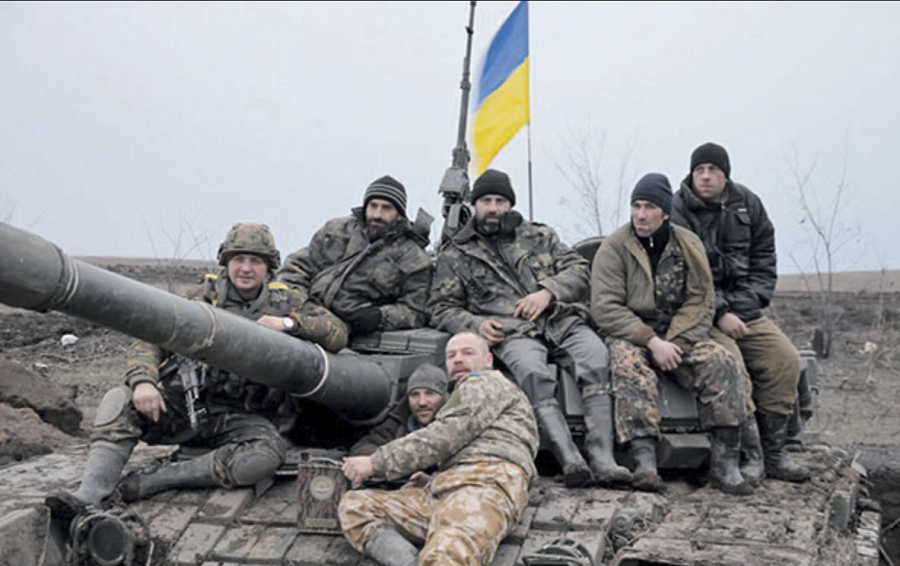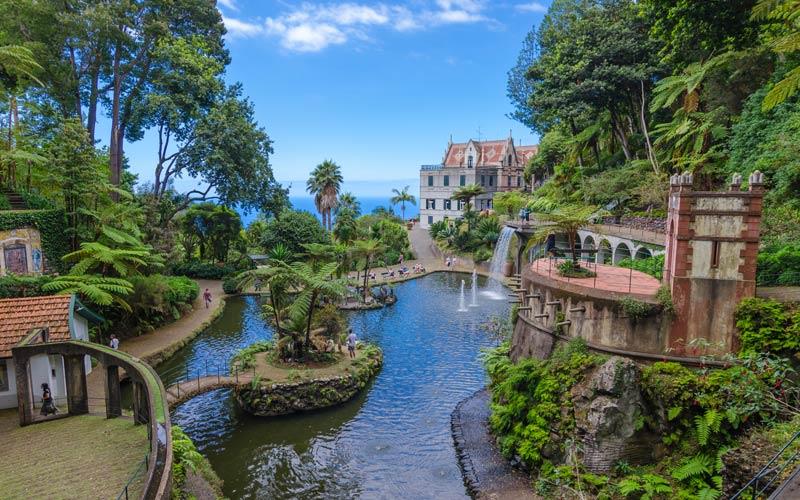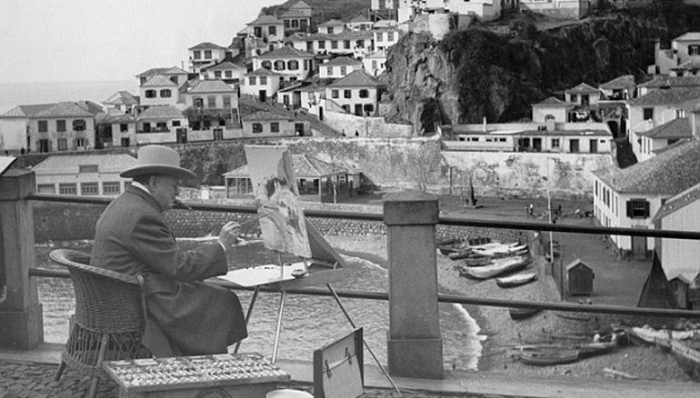Dr. Jack Wheeler
THE DANCING FOREST ON THE CURONIAN SPIT
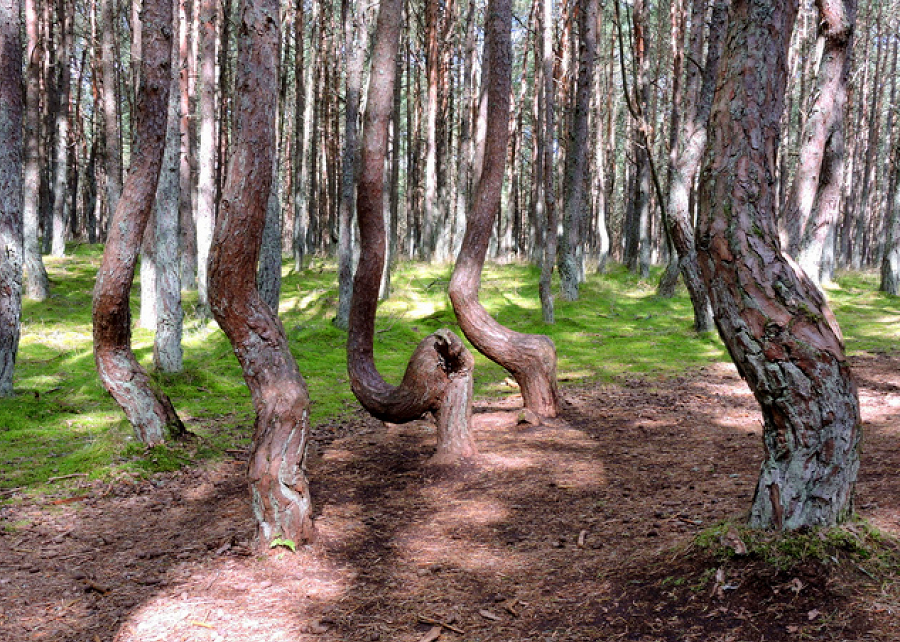 The Curonian Spit is a 60 mile-long and skinny stretch of sand separating the 625 square-mile Curonian Lagoon from the Baltic Sea. It is jointly shared by Lithuania and Kaliningrad. The trees of one section of the pine forests covering the spit are weirdly twisted and distorted by some unknown force of nature. Their bizarre undulations have earned it the sobriquet, “The Dancing Forest.” It’s one of the as-yet unexplained mysteries of life on our planet, and a wondrous one to see. (Glimpses of Our Breathtaking World #200 photo ©Jack Wheeler)
The Curonian Spit is a 60 mile-long and skinny stretch of sand separating the 625 square-mile Curonian Lagoon from the Baltic Sea. It is jointly shared by Lithuania and Kaliningrad. The trees of one section of the pine forests covering the spit are weirdly twisted and distorted by some unknown force of nature. Their bizarre undulations have earned it the sobriquet, “The Dancing Forest.” It’s one of the as-yet unexplained mysteries of life on our planet, and a wondrous one to see. (Glimpses of Our Breathtaking World #200 photo ©Jack Wheeler)
FLASHBACK FRIDAY – THE LOST CITY OF KUELAP
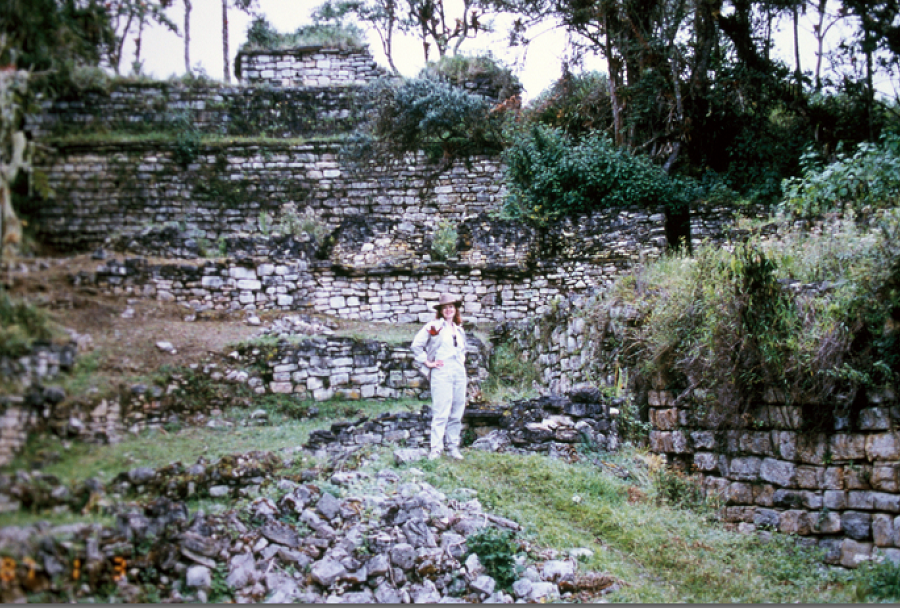 10,000 feet high in the Amazon cloud forests of northern Peru is a mysterious lost city built by an unknown people many centuries before the Incas existed. Known as Kuelap by villagers in the lowlands below, the Incas called the people who built it Chachapoyas, “Cloud Warriors.” I led an expedition here in 1994, climbing high up into the Amazon Andes to come upon gigantic stone walls 60 feet high surrounding hundreds of stone structures. Here you see Rebel among them. We’ll be here again in a year or two in another exploration of Peru. (Glimpses of Our Breathtaking World #153, photo ©Jack Wheeler)
10,000 feet high in the Amazon cloud forests of northern Peru is a mysterious lost city built by an unknown people many centuries before the Incas existed. Known as Kuelap by villagers in the lowlands below, the Incas called the people who built it Chachapoyas, “Cloud Warriors.” I led an expedition here in 1994, climbing high up into the Amazon Andes to come upon gigantic stone walls 60 feet high surrounding hundreds of stone structures. Here you see Rebel among them. We’ll be here again in a year or two in another exploration of Peru. (Glimpses of Our Breathtaking World #153, photo ©Jack Wheeler)
HALF-FULL REPORT 04/15/22
On the first day of Russia’s invasion of Ukraine, February 24, the 19 Ukrainian soldiers stationed on the tiny Black Sea islet of Snake Island were ordered to surrender by a Russian warship – their response made world headlines. On March 14, Ukraine commemorated their heroism by issuing a postage stamp of a Snake Island soldier presenting the bird to the warship:
But the real payback came a few minutes past midnight night before last (4/14). Does that ship in the stamp look familiar? It should, for you likely have seen photos of it all over the internet now. Yes, it’s (or was) Russia’s Black Sea Fleet flagship Moskva now lying on the ocean floor with its captain and hundreds of its crew.
Here’s the story of how this happened…
Now, no peeking, but there’s a mind-blow Easter surprise in this HFR that’s a genuine personal life-saver. So read on.
SLOVENIA’S VINTGAR GORGE
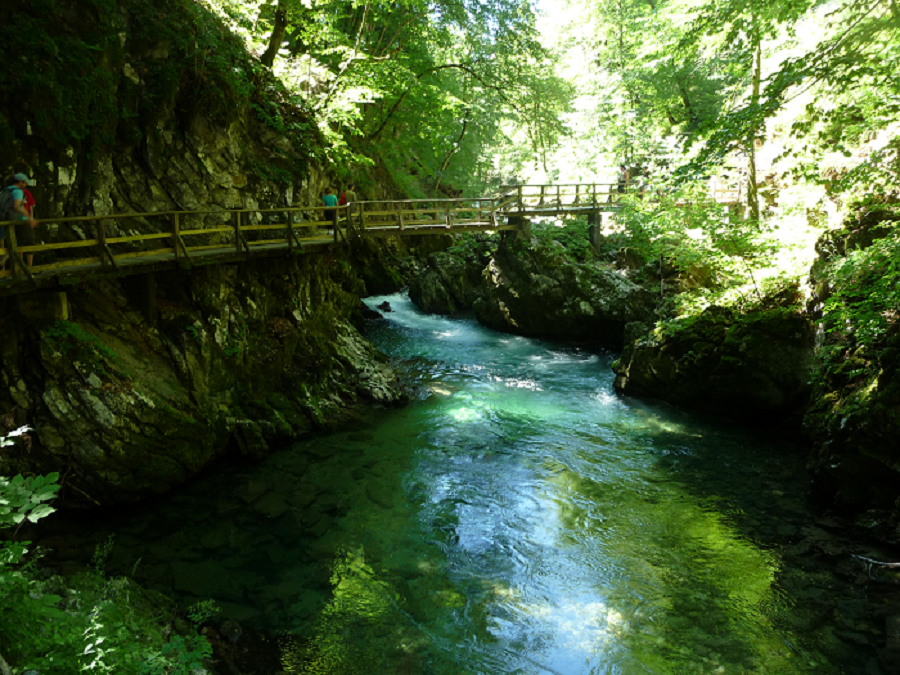 In a hidden corner of Europe, the Radovna River pours off the Julian Alps to carve out the Vintgar Gorge with crystal clear water. A mile-long walkway with towering limestone cliffs on either side is your access.
In a hidden corner of Europe, the Radovna River pours off the Julian Alps to carve out the Vintgar Gorge with crystal clear water. A mile-long walkway with towering limestone cliffs on either side is your access.
Nearby is the gorgeous Lake Bled, with Bled Castle suspended atop a shoreline cliff. The medieval village of Piran, built on a spit of land projecting into the Adriatic Sea and encircled by a white sand beach is a short drive away. Ljubljana is one of Europe’s most utterly charming capital cities.
Most people have only heard of Slovenia as the birthplace of First Lady Melania Trump, but those who have been here understand it is one of the most entrancing countries on the European continent – pristine beauty, spotless environment, friendly and hospitable people, safe and very well-run. Whenever your next visit to Europe may be, try to include a few days or week or so here. You’ll never run out of fascinating things to do. A stroll through the Vintgar Gorge is an example out of so many. (Glimpses of Our Breathtaking World #19 photo ©Jack Wheeler)
THE BEAUTY OF BANGLADESH
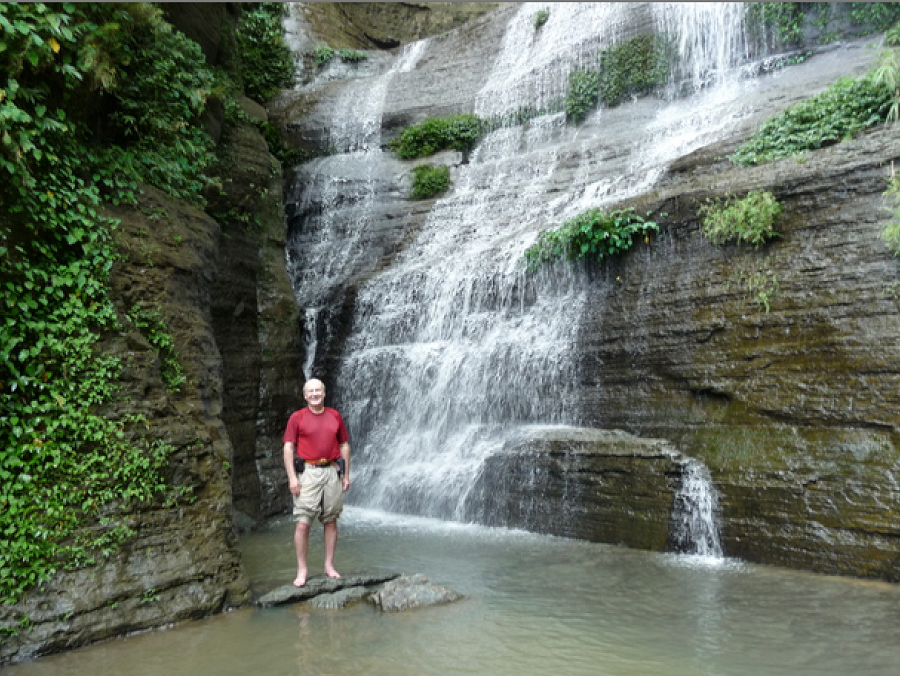 Most people consider Bangladesh a basket case country – all crowded overpopulated poverty constantly flooding etc. Yet I found it to be extraordinarily beautiful. The Shuvalong Falls here is just one example. It’s in the Chittagong Hills near the border with Burma. You’ll find Hindu shrines, massive mountain top Buddhist temples, small Moslem mosques, and a Christian church in almost every village
Most people consider Bangladesh a basket case country – all crowded overpopulated poverty constantly flooding etc. Yet I found it to be extraordinarily beautiful. The Shuvalong Falls here is just one example. It’s in the Chittagong Hills near the border with Burma. You’ll find Hindu shrines, massive mountain top Buddhist temples, small Moslem mosques, and a Christian church in almost every village
The charming main town of Rangamati is bustling with friendly energy. A boat ride on serene Kaptai Lake is soul-soothing. Everyone has a smile for you. It’s a place of captivating serendipity. A wonderful experience you might want for yourself. (Glimpses of Our Breathtaking World #154, photo ©Jack Wheeler)
AFRICAN FLATDOGS
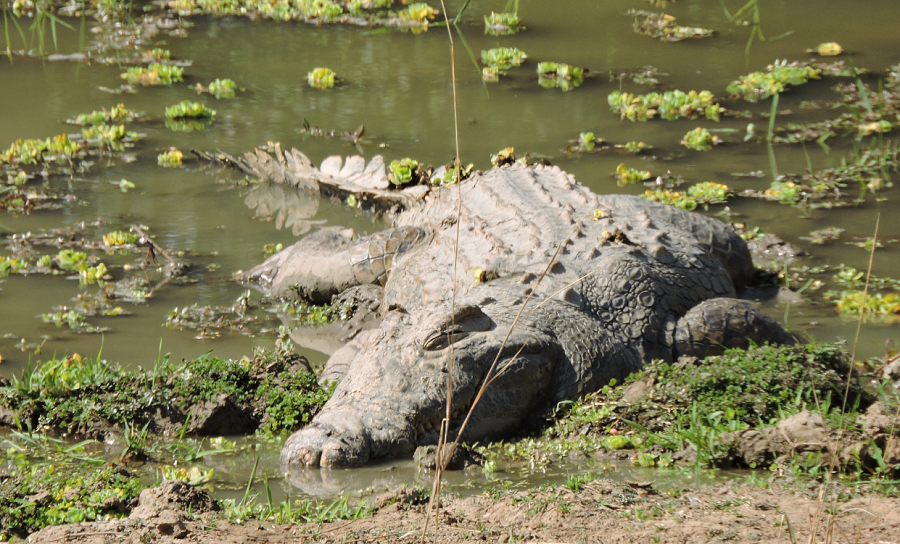 Here in Zambia and elsewhere in Africa, crocodiles are nicknamed “Flatdogs.” You can see why. They spend much of their lives lying flat on the mud bank of a pond or river. Yet when on the hunt they can attack with astounding speed and surprise, leaping unseen from muddy water upon an unsuspecting target twenty feet away in an instant. This happened to a young boy fishing along the Luangwa River near our encampment just days ago. Africa is unforgiving of the unwary. (Glimpses of Our Breathtaking World #142 Photo ©Jack Wheeler)
Here in Zambia and elsewhere in Africa, crocodiles are nicknamed “Flatdogs.” You can see why. They spend much of their lives lying flat on the mud bank of a pond or river. Yet when on the hunt they can attack with astounding speed and surprise, leaping unseen from muddy water upon an unsuspecting target twenty feet away in an instant. This happened to a young boy fishing along the Luangwa River near our encampment just days ago. Africa is unforgiving of the unwary. (Glimpses of Our Breathtaking World #142 Photo ©Jack Wheeler)
BACK TO THE DUCHY OF MUSCOVY
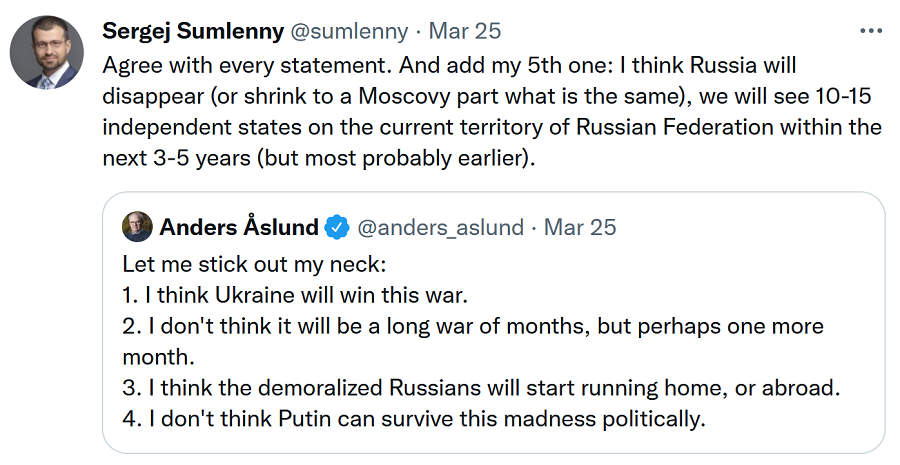 Back in the 1990s, I wrote Back to the Duchy of Muscovy, describing how the centuries of Russia’s relentless expansion from the small area around Moscow to a geographical behemoth – see A Short History of Russia – may well work in reverse.
Back in the 1990s, I wrote Back to the Duchy of Muscovy, describing how the centuries of Russia’s relentless expansion from the small area around Moscow to a geographical behemoth – see A Short History of Russia – may well work in reverse.
A relentless shrinking would occur, I surmised, with one region after another breaking apart from the Kremlin’s grasp if Russia did not embrace freedom and democracy but continued its authoritarian ways after the extinction of the Soviet Union.
Alas, my Back to… article is gone with the wind of a quarter-century ago. Then along comes Sergej Sumlenny, a Russian scholar of Russia’s history with its conquered people and neighbors. Here is a spectacularly informative YouTube interview of him explaining how Russia could soon be on its way back to the Duchy of Muscovy. Enjoy!
COURTSHIP IN THE GALAPAGOS
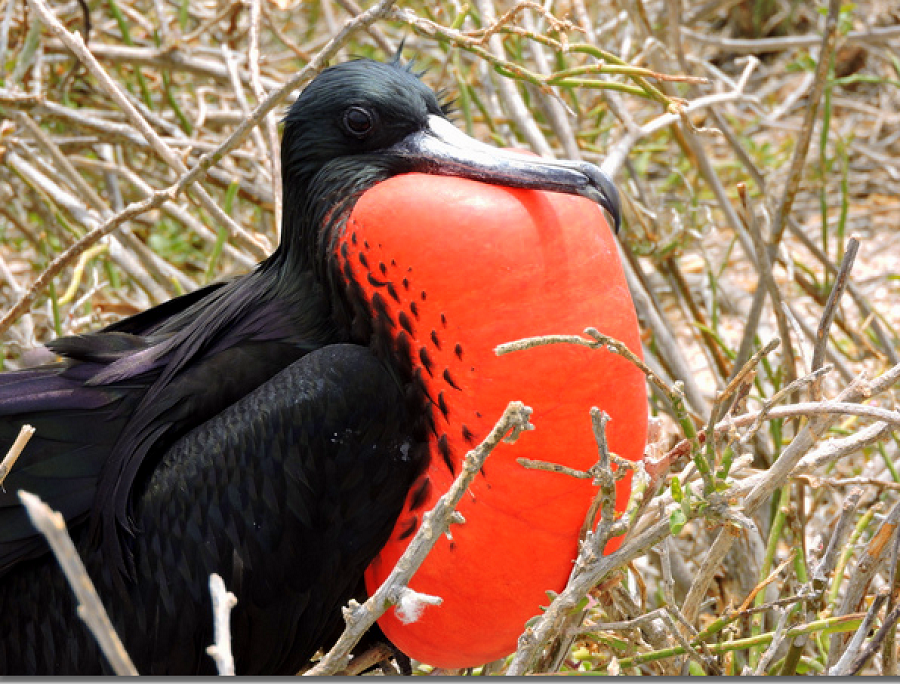 The male Magnificent Frigatebird has a flap of loose bright red skin on his neck called a “gular sac.” During mating season, they huff and puff, filling it with air to blow it up like a balloon. They then parade around showing off for the ladies, for the bigger the red balloon, the more the ladies are aroused. Size matters, even in the Galapagos.
The male Magnificent Frigatebird has a flap of loose bright red skin on his neck called a “gular sac.” During mating season, they huff and puff, filling it with air to blow it up like a balloon. They then parade around showing off for the ladies, for the bigger the red balloon, the more the ladies are aroused. Size matters, even in the Galapagos.
This is only one of many courtship displays among the birds and animals of these extraordinary islands. No wonder the Galapagos are called “evolution’s laboratory.” (Glimpses of Our Breathtaking World #199 photo ©Jack Wheeler)
FLASHBACK FRIDAY – THE CRUSADER FORTRESS IN THE CAUCASUS
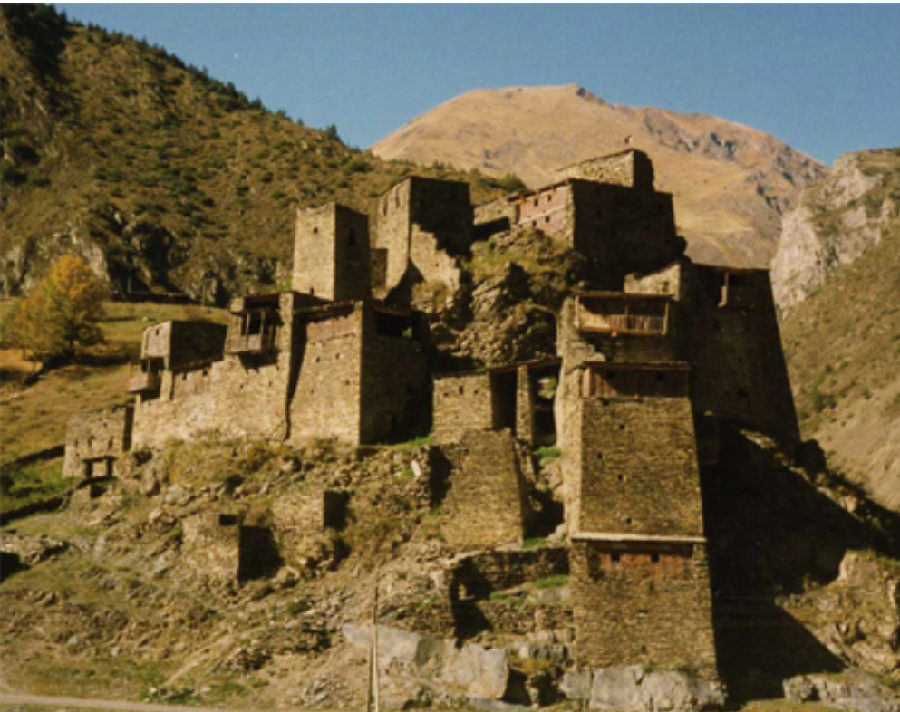 This is the fortress town of Shatili in an extremely remote Caucasus region in Georgia called Khevsureti. It was built by the Crusaders 1,000 years ago. The Khevsur people who live here trace their ancestry back to these Crusaders and until the 1930s still wore chain mail in feud-battles with other towns. I took this picture in 1991.
This is the fortress town of Shatili in an extremely remote Caucasus region in Georgia called Khevsureti. It was built by the Crusaders 1,000 years ago. The Khevsur people who live here trace their ancestry back to these Crusaders and until the 1930s still wore chain mail in feud-battles with other towns. I took this picture in 1991.
American traveler Richard Halliburton (1900–1939) saw and recorded the customs of the Khevsurs in 1935. The Khevsur men, dressed in chain mail and armed with broadswords, wore garments full of decoration made up of crosses and icons. They don’t do that anymore, but they proudly retain their Crusader Christian heritage – for Georgia adopted Christianity in the 4th century AD. (Glimpses of Our Breathtaking World #85 photo ©Jack Wheeler)
HALF-FULL REPORT 04/08/22
The Russian soldiers who did this to five innocent civilian Ukrainians, two men, two women, one child, can no longer be considered human, but subhuman barbarian monsters. Their goal – now a common sentiment expressed by many Russians on the Internet – is the complete physical extinction of the Ukrainian people.
Their Final Solution for Ukraine is the same as Nazi Germany’s for the Jews. Denial of one is just as morally depraved as denial of the other.
Survivors of the Bucha Massacre remain in a state of shock with no answer to their question, “Why do the Russians hate us so much?” It may be an unanswerable question just as why did the Nazi Germans hate Jews so much. Right now the answer doesn’t matter. All that matters is the defeat of such genocidal insanity.
For it’s not just Bucha – it’s what’s found in any place liberated by Ukrainian forces from Russian occupation.
AGIOS LAZAROS
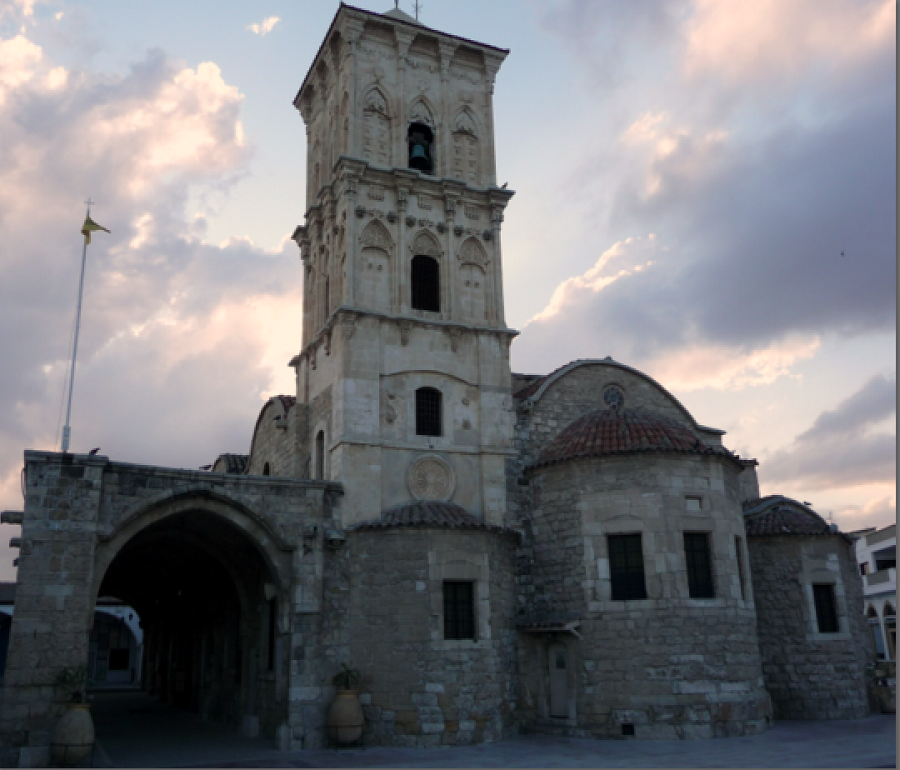 We’re all familiar with the miracle of Jesus raising Lazarus from the dead four days after his entombment in John 11:1-44. But what happened to Lazarus afterwards – what did he do with the rest of his (second) life?
We’re all familiar with the miracle of Jesus raising Lazarus from the dead four days after his entombment in John 11:1-44. But what happened to Lazarus afterwards – what did he do with the rest of his (second) life?
He left Judea to live on the island of Cyprus. There he met Paul the Apostle and his evangelizing partner Barnabas who was a Cypriot. They appointed him the first Bishop of Kition (present day Lanarca), where he lived for another 30 years, then upon his second death was buried for the last time.
A church was built over his marble sarcophagus which has undergone many resurrections itself over the last two millennia. But here it stands today after all those ravages of time, Agios Lazaros, the Church of St. Lazarus, over his still-preserved sarcophagus. On every Lazarus Saturday (eight says before Easter), an icon of St. Lazarus is taken in procession through the streets of Lanarca. (Glimpses of Our Breathtaking World #165 photo ©Jack Wheeler)
NEGOTIABLE AFFECTION IN SKAGWAY
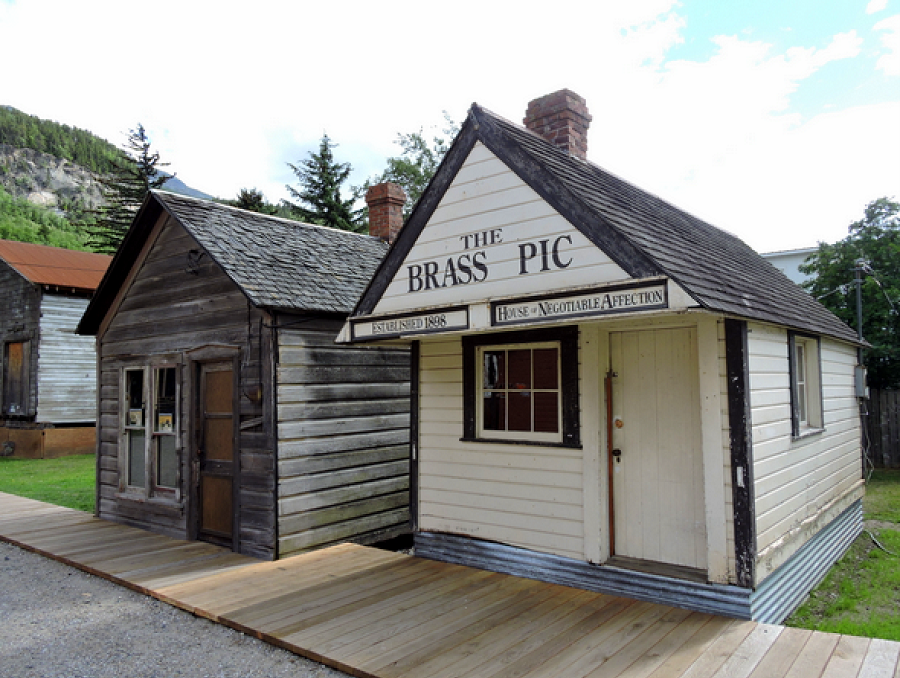 When gold was discovered in the Klondike of Canada’s Yukon in 1896, the fastest way to get there was a tiny hamlet at the end of a long inlet of Alaska’s Inland Passage coast called Skagway. By 1898, Skagway was a lawless Wild West boomtown flooded with prospectors who needed entertainment and release from the arduous travails of gold searching – and ladies who would provide it for a price.
When gold was discovered in the Klondike of Canada’s Yukon in 1896, the fastest way to get there was a tiny hamlet at the end of a long inlet of Alaska’s Inland Passage coast called Skagway. By 1898, Skagway was a lawless Wild West boomtown flooded with prospectors who needed entertainment and release from the arduous travails of gold searching – and ladies who would provide it for a price.
The Brass Pic (as in a miner’s pic & shovel) was one of many Houses of Negotiable Affection in Skagway that flourished until the gold panned out in 1900. It’s preserved as a museum today in fond memory of those days of commercially consensual delight. Skagway is a terrific place to experience, drawing over a million visitors a year. Come here to see what draws them. (Glimpses of Our Breathtaking World #198 photo ©Jack Wheeler)
DEAD VLEI, NAMIBIA
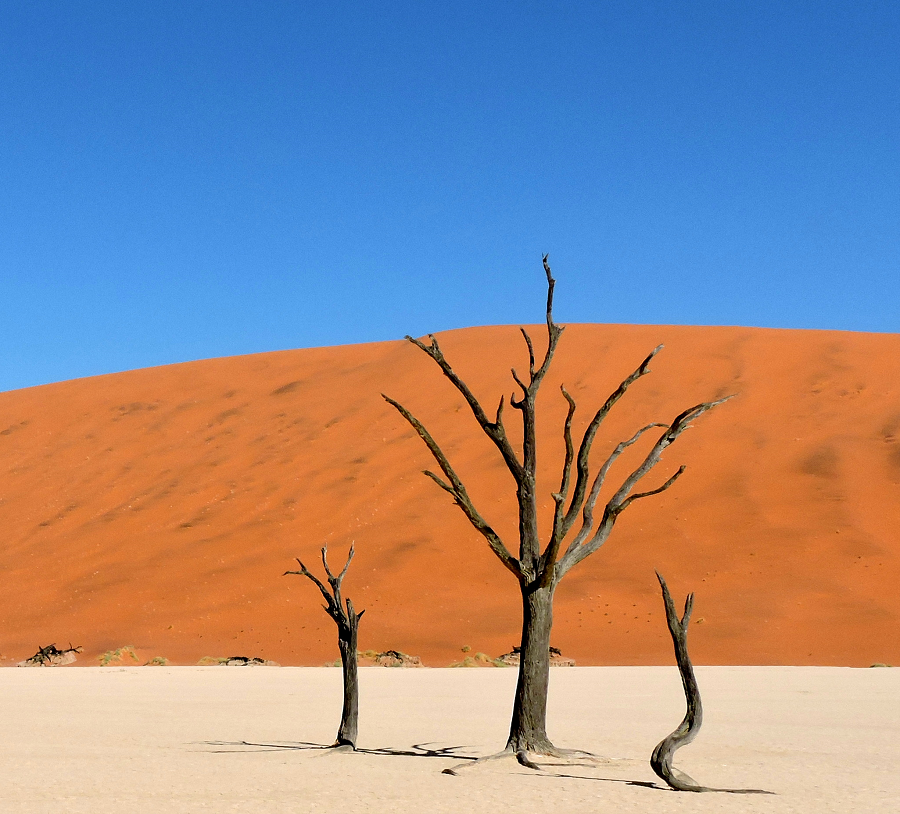 Many consider this the most surrealistic place on earth. The clarity of the air turns the sky deep cobalt blue, the dunes are so old they’ve rusted red, combining with the white clay floor to give the skeletal trees a scene out of a Dali painting or a science fiction movie. But it’s real.
Many consider this the most surrealistic place on earth. The clarity of the air turns the sky deep cobalt blue, the dunes are so old they’ve rusted red, combining with the white clay floor to give the skeletal trees a scene out of a Dali painting or a science fiction movie. But it’s real.
A thousand years ago the river watering these trees dried up, leaving a white clay pan amidst red sand dunes almost as tall as the Empire State Building. It’s so dry here these acacia trees can’t decompose, their skeletons standing scorched in the sun for ten centuries.
Dead Vlei is in a region of enormous dunes called Sossusvlei. It’s a mind-boggling experience to float over Sossusvlei in a hot air balloon. Namibia, in fact, is full of such experiences – the largest fur seal colony anywhere at Cape Cross, the marvelous abundance of African wildlife at the Etosha Pan, the dramatic shipwrecks dotting the Skeleton Coast, traditional people living untouched by the modern world like the Himbas.
Plus it’s one of the safest and best-run countries in all Africa – certainly worth consideration for your bucket list. (Glimpses of Our Breathtaking World #47 photo ©Jack Wheeler)
THE CASTLE PRISON OF RICHARD THE LIONHEART
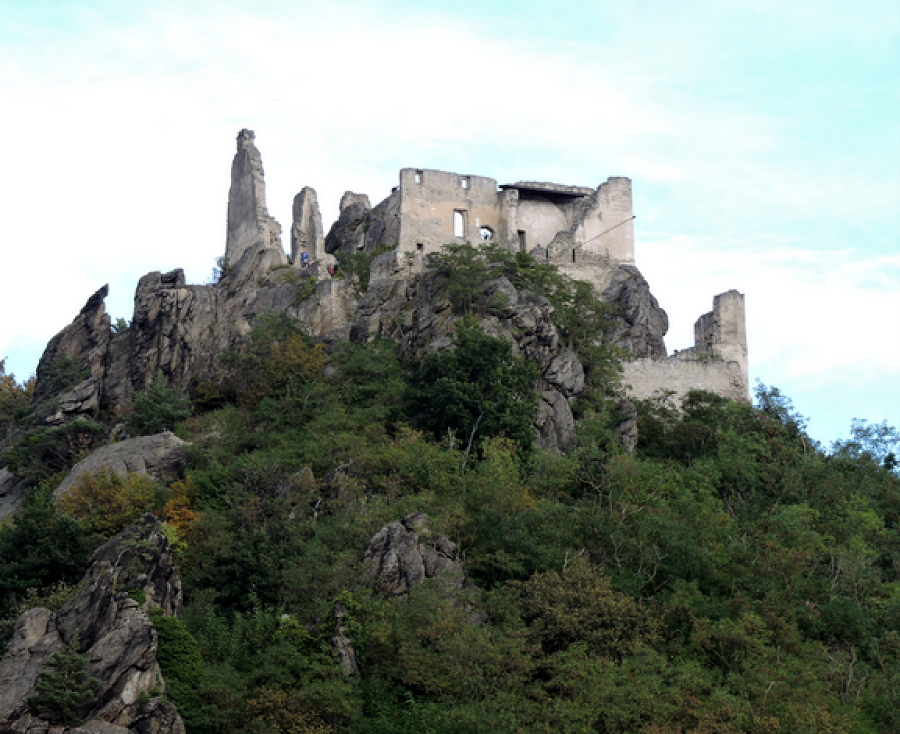 This is Durnstein Castle, perched on a precipice high above the Danube River in Austria some 60 miles upriver from Vienna. Built in the early 1100s, here is where King of England Richard the Lionheart was imprisoned, having been captured by his enemy Leopold V of Austria on his return from the Third Crusade in the Holy Land.
This is Durnstein Castle, perched on a precipice high above the Danube River in Austria some 60 miles upriver from Vienna. Built in the early 1100s, here is where King of England Richard the Lionheart was imprisoned, having been captured by his enemy Leopold V of Austria on his return from the Third Crusade in the Holy Land.
The story is well known of how Richard’s brother John had usurped the throne and impeded paying Richard’s ransom – and the legend of Robin Hood raising the money pilfering it from thieving nobles. The ransom was finally paid in 1194, with Richard returning to be crowned King of England once again. The castle fell into disrepair, uninhabitable since the late 1600s. It is an eerie journey back into history to explore it today. (Glimpses of Our Breathtaking World #197 photo ©Jack Wheeler)
FLASHBACK FRIDAY – TAKING YOUR KIDS ON A GREAT ADVENTURE
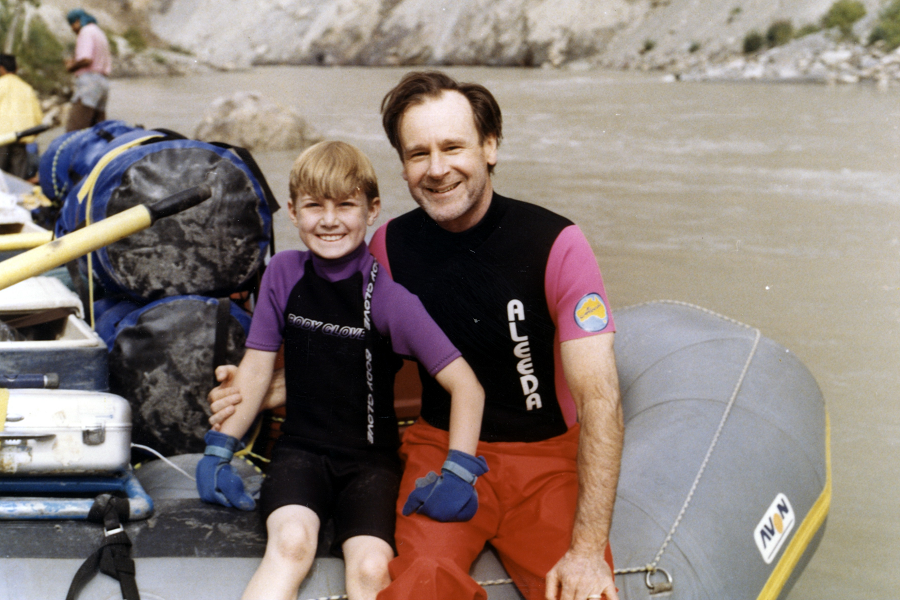 When he was 10 years old, I took my son Brandon to Indian Tibet for one of the great whitewater experiences on the planet, running the Zanskar River through the crest of the Himalayas. That was 27 years ago and he’s never forgotten it to this day.
When he was 10 years old, I took my son Brandon to Indian Tibet for one of the great whitewater experiences on the planet, running the Zanskar River through the crest of the Himalayas. That was 27 years ago and he’s never forgotten it to this day.
Taking your kids on a great adventure not only bonds you with them in a deep and unique way, it opens the world to them as a place of magic, excitement, and wonder that stays with them for the rest of their lives. And for the rest of your life too.
This coming August, we’ll explore Indian Tibet again – the remote Himalayan regions of Lahaul, Spiti, Ladakh, and Zanskar – where traditional Tibetan culture still flourishes as it no longer does across the border in Chinese Tibet. I am proud to say that Brandon will be leading the expedition. I’ll just be along for the ride. (Glimpses of Our Breathtaking World #64 Photo ©Jack Wheeler)
HALF-FULL REPORT 04/01/22
As recounted by Skye yesterday, what happened at a hearing of the House Judiciary Committee on Tuesday (3/29) was revelatory in the extreme: Gaetz Enters Hunter Biden Laptop Data Into Congressional Record.
Skye concludes this is very persuasive evidence that “Xiden’s puppeteers have decided that Sloppy Joe has got to go, and go before the midterms wipe out their control of Congress.” It’s a conclusion hard to avoid. But what do they really gain by doing that?
THE MOST BRITISH ISLES
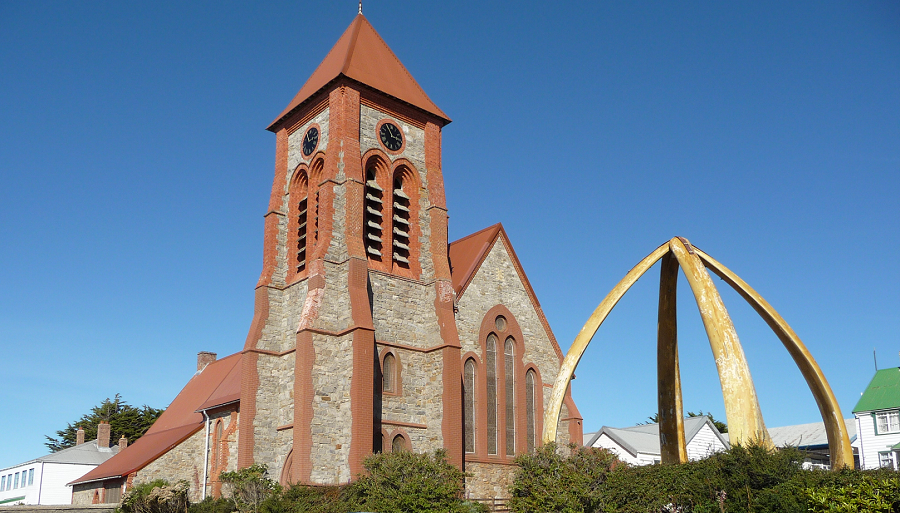 This is the Anglican Christ Church Cathedral in Stanley, capital of the Falkland Islands, consecrated in 1892. In front is its famous Whale Bone Arch, made from the jaw bones of two blue whales (the largest creature to have ever lived, bigger than any dinosaur, and still swimming in our oceans today).
This is the Anglican Christ Church Cathedral in Stanley, capital of the Falkland Islands, consecrated in 1892. In front is its famous Whale Bone Arch, made from the jaw bones of two blue whales (the largest creature to have ever lived, bigger than any dinosaur, and still swimming in our oceans today).
The Falklands are in far southern Atlantic some 300 miles east of the tip of South America. Claimed by Britain in 1782, an ongoing dispute first with Spain then Argentine resulted in Britain declaring it a Crown Colony and establishing a settlement, Stanley, in 1840. In 1982, after constantly claiming the islands were theirs, Argentina militarily invaded. The Falklands War was won by Margaret Thatcher ordering the British Navy, Army, and Royal Marines to take the islands back at gunpoint.
Today, Falklanders are the most patriotic people of all British possessions. They are wonderfully cheerful and friendly. There’s no more British place on earth. Don’t ever pass a chance to come here. (Glimpses of Our Breathtaking World #167 photo ©Jack Wheeler)
THE POLISH SAVIOR OF WESTERN CIVILIZATION
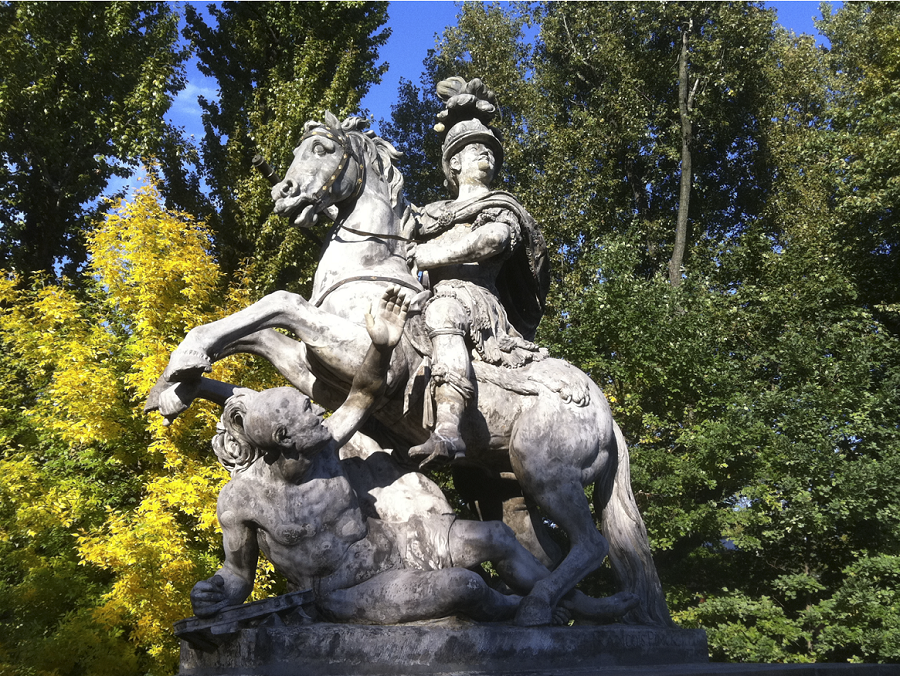 On September 12, 1683, Ottoman Sultan Mehmet IV as the Caliph of all Islam was on the verge of realizing the great Moslem dream of conquering all of Christian Europe for the glory of Allah. The great obstacle in his way – the city of Vienna – was about to be overwhelmed by the Sultan’s gigantic army of 140,000 Islamic Taliban of their day.
On September 12, 1683, Ottoman Sultan Mehmet IV as the Caliph of all Islam was on the verge of realizing the great Moslem dream of conquering all of Christian Europe for the glory of Allah. The great obstacle in his way – the city of Vienna – was about to be overwhelmed by the Sultan’s gigantic army of 140,000 Islamic Taliban of their day.
On the Kahlenberg hilltop above Vienna, the commander of the Christian forces, King Jan III Sobieski of Poland, gave the order to attack. Twenty thousand armed horsemen galloped down the slopes of Kahlenberg, the largest cavalry charge in history, with the Polish King and his Winged Hussars in the lead. The cavalry trampled the Ottomans and made straight for their camps.
Ottoman commander Kara Mustafa fled out of his tent and barely escaped with his life (it didn’t last long – the Sultan ordered him strangled). With the Christian victory at The Battle of Vienna, the Moslem threat to Europe was over. Sobieski wrote a letter to Pope Innocent XI, paraphrasing Julius Caesar:
“Venimus, Vidimus, Deus vincit” – “We came, We saw, God conquered.”
In turn, the Pope hailed Sobieski as “The Savior of Western Christendom.” Indeed he was, and still is so revered by the Polish people to this day – with no apology.
For the people of Poland stand out among those of all Europe for their pride in being part of Western Civilization – symbolized for them by this statue of their Hero King trampling the Ottomans in the beautiful Royal Baths Park in Warsaw. They will make sure visitors to the statue note that underneath the right forearm of the fallen Turkish soldier is a book – the Koran.
You owe it to yourself to visit Poland and meet the Polish champions of Christian liberty, having freed themselves from the Ottomans, the Russians, and the Soviets. We need more like them today. (Glimpses of Our Breathtaking World #159 Photo ©Jack Wheeler)
FLOWER HIGHWAYS, FLOWER TRAILS
For miles and miles, the roads in the Azores Islands are lined with flowers on both sides. Even the foot paths and trails are strewn with flowers.
As you know, I’ve been to every country in the world. I know of no place on earth more beautiful, more flower strewn, more peaceful, serene, and safe than Portugal’s island paradises of Madeira and the Azores in the Atlantic.
So plan on joining me, Rebel, and your fellow TTPers on our exploration of Atlantic Paradises, June 24 to July 2. Make this beauty and serenity a part of your life. (Glimpses of Our Breathtaking World #196 photo ©Jack Wheeler)
TWO COOL MOUNTAIN TAJIK KIDS AT THE FIRST PEARL OF SHING
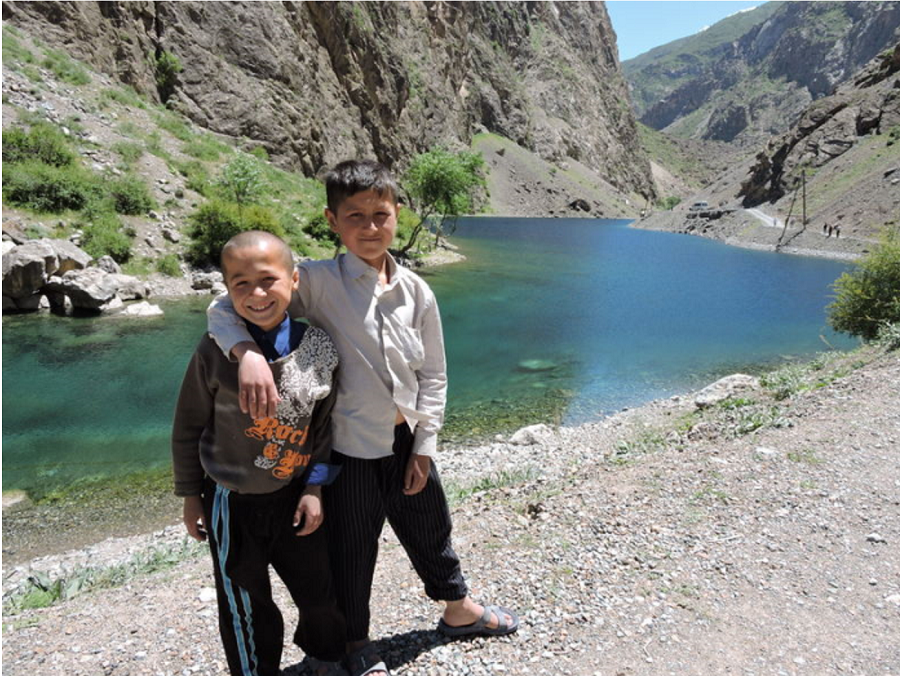 The high hidden Valley of Shing in western Tajikistan holds, as we learned in Glimpse #52, a series of seven stepping-stone lakes called the Seven Pearls of Shing. The valley is dotted with tiny villages of Mountain Tajiks, descendants of the ancient Sogdians who fought Alexander the Great.
The high hidden Valley of Shing in western Tajikistan holds, as we learned in Glimpse #52, a series of seven stepping-stone lakes called the Seven Pearls of Shing. The valley is dotted with tiny villages of Mountain Tajiks, descendants of the ancient Sogdians who fought Alexander the Great.
Alexander fell in love with and married a Sogdian princess named Roxanna – and the girls of Shing are often named Roxanna to this day. The Mountain Tajiks of the Shing are a special people – strong, independent and free. They are also warm and welcoming. The kids – the girls just like the boys – grow up vibrant and confidant. These two young brothers exemplify that.
Each of the seven pearls have a unique breathless beauty, for they are of different colors and change according to the time of day. We are here at Mijnon (Eyelash), the first pearl, followed by Soya (Shade), Hushnor (Vigilance), Nophin (Navel), Khurdak (Little One), Marguzor (Blossoming), and Hazor Chasma (Thousand Springs). Towering above us are snow-laced mountains 18,000 feet high.
Perhaps you’d like to join your fellow TTPers to make the Seven Pearls, and so much else, a part of your life? Let me know! (Glimpses of Our Breathtaking World #53 photo ©Jack Wheeler)
FLASHBACK FRIDAY – BRANDON AT LAMAYURU
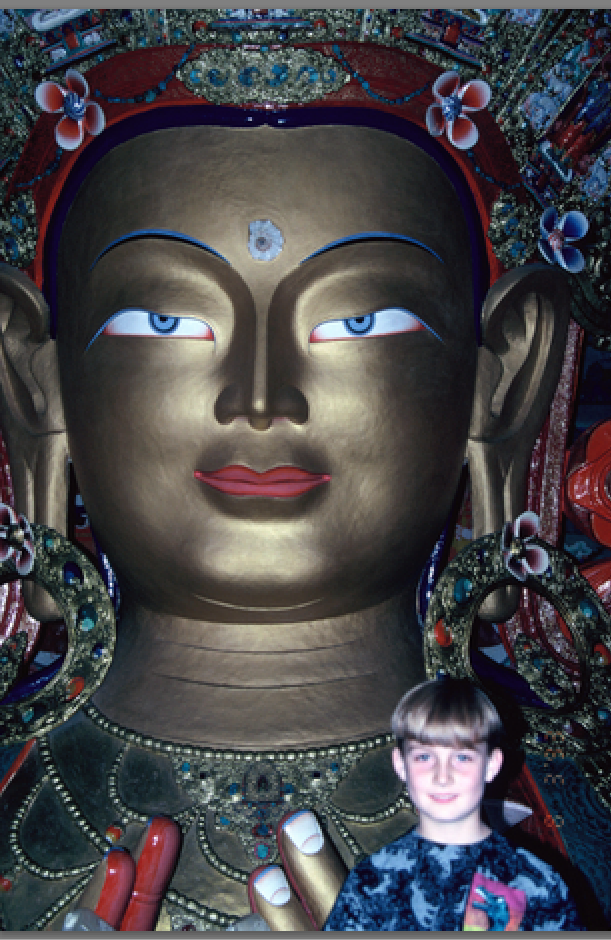 High in the Himalayas of India in the remote moonscape of Tibetan Ladakh is the gompa (Tibetan monastery) of Lamayuru. It is older than Tibetan Buddhism, for it was originally a gompa for the lama monks of Bön, the ancient animist religion of Tibet. I took my son Brandon here on an expedition through Tibetan India in 1993. Brandon had his 10th birthday here. Behind him is the enormous statue of blue-eyed Sakyamuni Buddha in the central prayer hall.
High in the Himalayas of India in the remote moonscape of Tibetan Ladakh is the gompa (Tibetan monastery) of Lamayuru. It is older than Tibetan Buddhism, for it was originally a gompa for the lama monks of Bön, the ancient animist religion of Tibet. I took my son Brandon here on an expedition through Tibetan India in 1993. Brandon had his 10th birthday here. Behind him is the enormous statue of blue-eyed Sakyamuni Buddha in the central prayer hall.
Brandon has never forgotten Lamayuru as anyone who has been here never does. We’ll be here again this August – and Brandon will be leading the expedition (Glimpses of our breathtaking world #151 photo ©Jack Wheeler)
HALF-FULL REPORT 03/25/22
Now that his astoundingly accurate predictions are coming true, Reuters reported ereyesterday (3/23) that the Kremlin wants him in jail: Top Russian Journalist Defiant in Face of Fake News Investigation.
But before a sitrep on how catastrophically bad the Russian military is doing in Ukraine, I need to tell you a story. And no worries, this HFR will be about lots of other stuff, not just Ukraine. Now let’s relax and settle in, it’s storytime.
HOW CLOSE CAN YOU GET TO A BABY SPERM WHALE?
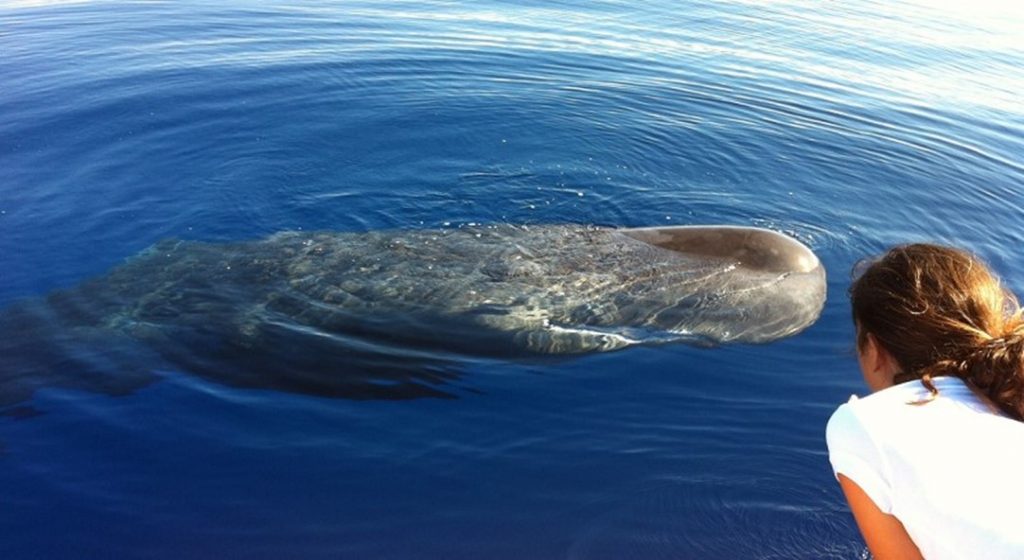 This close – if you’re at the right place at the right time in the right boat. That would be the Canal do Faial channel between the islands of Faial and Pico in the Azores, populated by more spawning sperm whales that just about anywhere else. It’s also a haven for many other whale and dolphin species on their migratory route between the North and South Atlantic.
This close – if you’re at the right place at the right time in the right boat. That would be the Canal do Faial channel between the islands of Faial and Pico in the Azores, populated by more spawning sperm whales that just about anywhere else. It’s also a haven for many other whale and dolphin species on their migratory route between the North and South Atlantic.
In June, this is one of the world’s best whale-watching sites – and we’ll be right there on our exploration of Atlantic Paradises June 24-July 2.
You won’t believe how truly paradisical Madeira and the Azores are. Not just the weather and the beauty, but how safe, calm, and serene they are, how friendly everyone is – so friendly because everyone here is at peace with themselves. You’ll discover your inner peace here too. While never being bored as there’s always something exciting to see and do. Like being this close to a baby sperm whale.
You owe it to yourself to make these Atlantic Paradises a part of your life. (Glimpses of our breathtaking world #195).
ONE PICTURE, FOUR COUNTRIES, AND A SURPRISE
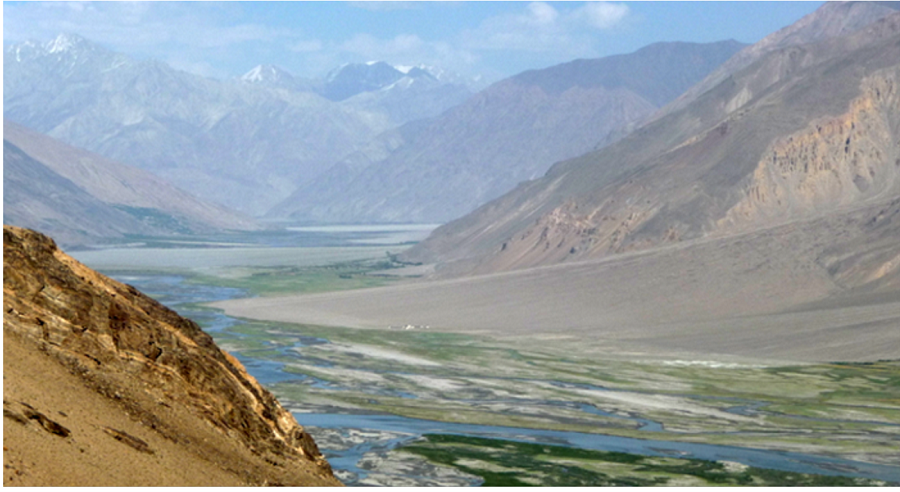 This is the Wakhan Corridor traversed by Marco Polo on his way to China in 1273. The river is the Amu Darya, known to Alexander the Great and the ancient Greeks as the Oxus. The Wakhan is the finger of northeast Afghanistan designed in the late 19th century to prevent the Russian Empire in Central Asia from touching the British Empire in India. It now separates Tajikistan from Pakistan with its fingertip the only border Afghanistan has with China.
This is the Wakhan Corridor traversed by Marco Polo on his way to China in 1273. The river is the Amu Darya, known to Alexander the Great and the ancient Greeks as the Oxus. The Wakhan is the finger of northeast Afghanistan designed in the late 19th century to prevent the Russian Empire in Central Asia from touching the British Empire in India. It now separates Tajikistan from Pakistan with its fingertip the only border Afghanistan has with China.
Thus you’re looking at four countries. The river forms the Tajik-Afghan border – Tajikistan is on the left, Afghanistan on the right, in the center distance are the Hindu Kush mountains of Pakistan, while in the far distance are the Karakorum mountains of China. This is a fabulously exotic remote part of our world with people living here tracing their ancestry to the troops of Alexander. Oh – and the surprise? I’ll tell you soon. (Glimpses of Our Breathtaking World #77 Photo ©Jack Wheeler)
INDIAN TIBET
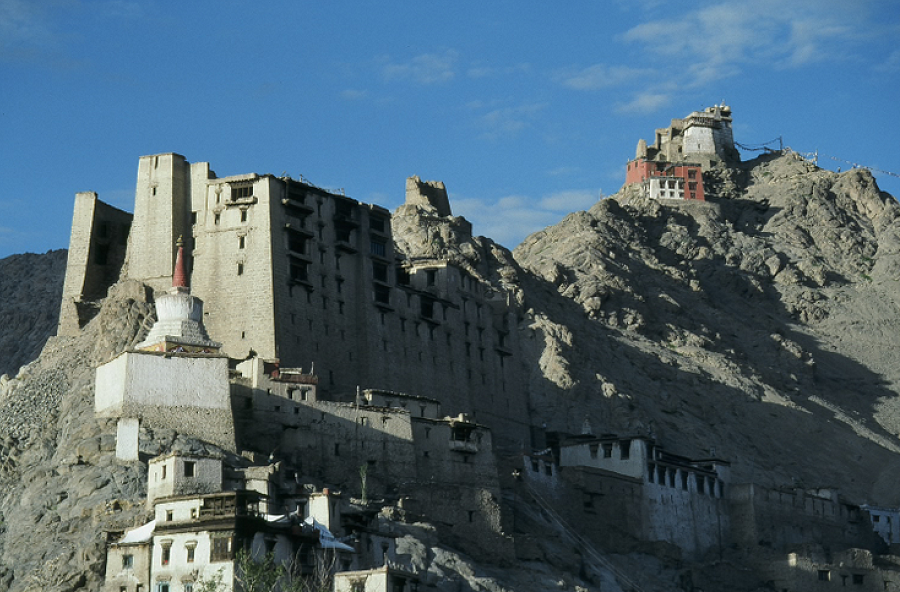 There is a part of Tibet the British kept from China and is now a part of India. The region is called Ladakh and this is its capital of Leh. It’s the Upper Indus river valley after it flows out of Chinese Tibet and before it reaches the Line of Control with Pakistan.
There is a part of Tibet the British kept from China and is now a part of India. The region is called Ladakh and this is its capital of Leh. It’s the Upper Indus river valley after it flows out of Chinese Tibet and before it reaches the Line of Control with Pakistan.
Ladakh is geographically and culturally Tibetan, where Tibetan culture still flourishes. Here the great gompas (monasteries) of Thikse and Hemis are active, and where you are welcome in hidden mysterious gompas like Lamayuru over a thousand years old.
There is an ultra-remote part of Ladakh called Zanskar where the Zanskar River flows through the crest of the Himalayas to reach the Upper Indus. Running the Zanskar is one of the world’s greatest whitewater experiences. We’ll see and do all of this next August on our Indian Tibet Expedition. (Glimpses of Our Breathtaking World #120 Photo ©Jack Wheeler)
MONTEZUMA’S CASTLE
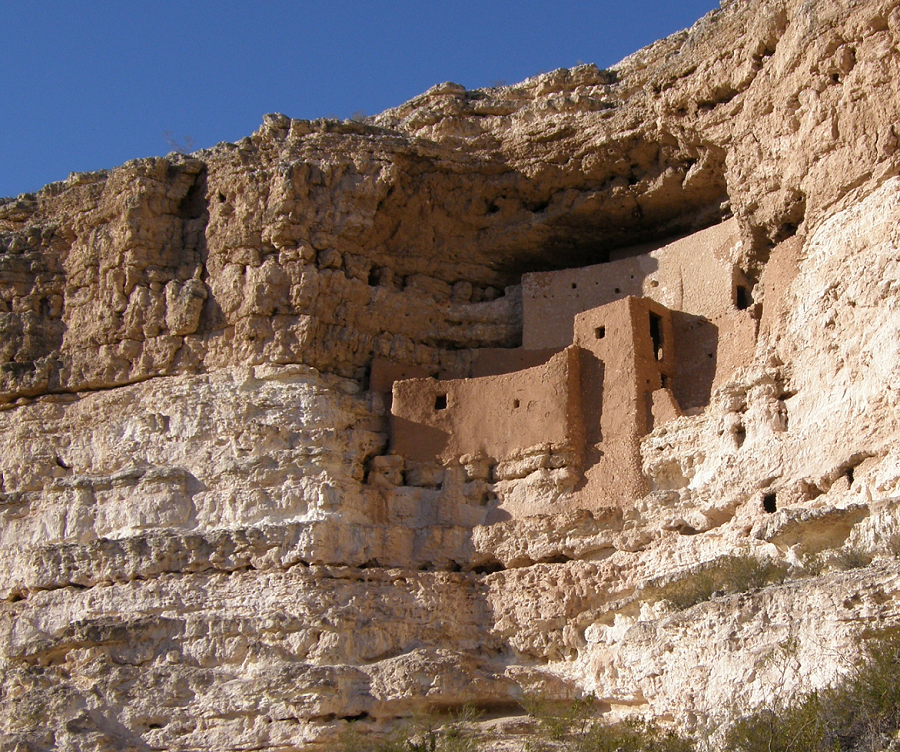 When American explorers came upon this extraordinary cliff dwelling in 1860s Arizona, they dubbed it “Montezuma’s Castle” on a whim. The Aztec ruler had nothing to do with it, of course. The Anasazi people built a number of these marvelous structures in the Southwest, high up on cliffs above a river that seasonally flooded.
When American explorers came upon this extraordinary cliff dwelling in 1860s Arizona, they dubbed it “Montezuma’s Castle” on a whim. The Aztec ruler had nothing to do with it, of course. The Anasazi people built a number of these marvelous structures in the Southwest, high up on cliffs above a river that seasonally flooded.
For hundreds of years the Anasazi flourished, skilled agriculturalists and brilliant at constructing vast irrigation systems. Yet it all came to naught with a devastating megadrought with no rain for many decades, culminating in the collapse of the Anasazi culture and abandonment of their cliff dwellings by the early 1500s.
Another lesson that it is nature that control’s the Earth’s climate, not us. You’ll find Montezuma’s Castle above Beaver Creek south of Sedona. It’s a marvel not to be missed. (Glimpses of Our Breathtaking World #194 photo ©Jack Wheeler)
FLASHBACK FRIDAY: AFGHAN MUJAHADDIN?
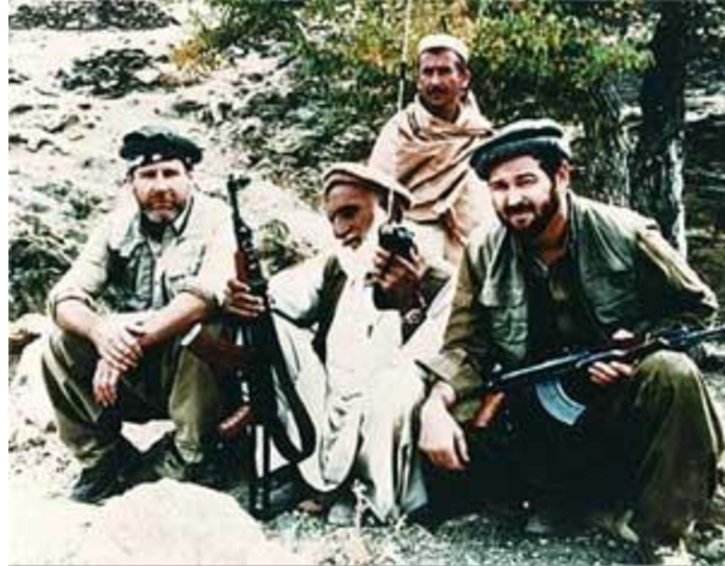 When my son Brandon was a cadet at Virginia Military Academy, his professor teaching Modern Military History gave a lecture on the 1980s War in Afghanistan fought by Afghan Mujahaddin against the Soviet Red Army occupation of their country. One of the pictures he showed was the one above of “three typical Mujahaddin fighters.”
When my son Brandon was a cadet at Virginia Military Academy, his professor teaching Modern Military History gave a lecture on the 1980s War in Afghanistan fought by Afghan Mujahaddin against the Soviet Red Army occupation of their country. One of the pictures he showed was the one above of “three typical Mujahaddin fighters.”
Brandon raised his hand. “Yes, Cadet Wheeler,” the professor called on him. “Actually, Professor,” Brandon said, “only the man in the center with the white beard is one. The man on the right is United States Congressman Dana Rohrabacher, while the man on the left is my father.”
The professor was stunned while the rest of the class stifled laughter. “Are you quite sure of that, Cadet Wheeler?” stammered the professor. “Oh, yes sir,” Brandon replied. “I recognize my own father. That photo is framed in my father’s study. It was taken in November 1988. The Afghan Commander’s name is Moli Shakur. I have known Congressman Rohrabacher all my life.”
The cadets all applauded in appreciation. To this day, this remains one of Brandon’s fondest college memories. (Glimpses of Our Breathtaking World #145 Photo ©Jack Wheeler)
HALF-FULL REPORT 03/18/22
A TTPer is in Ukraine now, who tells me the latest joke on Ukrainian lips is, “Everyone thought that Russia had the #2 army in the world. Turns out, that it has the #2 army in Ukraine."
The Russian Titanic has hit the Ukrainian Iceberg and is sinking. Here are the latest (3/16-17) updates from British Military Intelligence:
Our TTPer on the ground confirms this. I was asked on the TTP Forum this morning, “Jack, what’s your take on the end game in Ukraine?” My reply: “China feeding on the carcass of Russia.”
BEYOND THE PALE

TTP celebrates St. Patrick’s Day with its “nutshell history” of Ireland, first written in 2006. Happy St. Patrick’s Day to all TTPers!
Ronald Reagan’s origins are even more humble than Abraham Lincoln’s log cabin.
His great-grandfather, Michael O’Regan, was born in a hut of mud and slats in farmland called Doolis near the village of Ballyporeen, County Tipperary, in 1829.
In June 1984, Ronald Reagan came to Ballyporeen as President of the United States. In his speech to the townspeople in the village square, he said, “I can’t think of a place on the planet I would rather claim as my roots more than Ballyporeen, County Tipperary.”
A friend of mine was there as a member of Reagan’s staff. After the speech, the President commented to him, “I really am proud to be from here.” With a wink, he explained: “You see, I’m from Beyond the Pale.”
RONALD REAGAN’S FAVORITE IRISH JOKE
 In honor of St. Patrick’s Day today, it’s only appropriate to relate Ronald Reagan’s favorite Irish joke, as he was fond of telling it with such exuberance.
In honor of St. Patrick’s Day today, it’s only appropriate to relate Ronald Reagan’s favorite Irish joke, as he was fond of telling it with such exuberance.
An Irishman was walking along Inchydoney Beach in County Cork – Ireland’s most beautiful and not far from my ancestral village of Ballyporeen – when he came upon an old encrusted bottle washed up on the shore.
He picked it up, brushed off the sand, saw it was still stoppered and wondered what was inside. He carefully broke it open at the neck on a beach rock, and to his great surprise out popped a Leprechaun, an Irish genie.
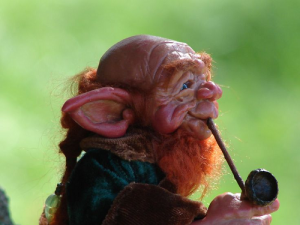 “Oh me man!” the Leprechaun exclaimed. “I was in that horrid bottle for a hundred years and you be settin’ me free! Well, I’ll be givin’ you two wishes before I’m on m’ way!”
“Oh me man!” the Leprechaun exclaimed. “I was in that horrid bottle for a hundred years and you be settin’ me free! Well, I’ll be givin’ you two wishes before I’m on m’ way!”
“Two wishes?” the Irishman asked incredulously. “Anything I want?”
“Anything – you just name it and it’s yours,” came the answer.
The Irishman couldn’t believe his luck. He thought for a moment, then said, “Firstly, what I’ll be wantin’ is a glass of the best Irish ale – but a very special glass!” he added quickly – "that no matter how much I drink it will always be full.”
Poof! There was a glass in his hand overflowing with Irish Red Ale. He took a sip – it was the best beer he’d ever had in his life. He drank and he drank and he drank, and five minutes later he hadn’t made a dent, the glass was still overflowing with Irish Red.
But by now the Leprechaun was getting impatient. “Listen me man!” he chastised. “I appreciate you settin’ me free and all, but I was in that bottle for far too long, I’ve got things to do, so you’ll be makin’ your second wish now!”
The Irishman thought good and hard. Finally he made his decision. He held up his overflowing magic glass, looked at it admiringly, and told the Leprechaun, “Ya know – I think I’ll have another one of these!”
There’s no doubt about it – God loves the Irish.
THE GREAT BLACK OF MAKALU
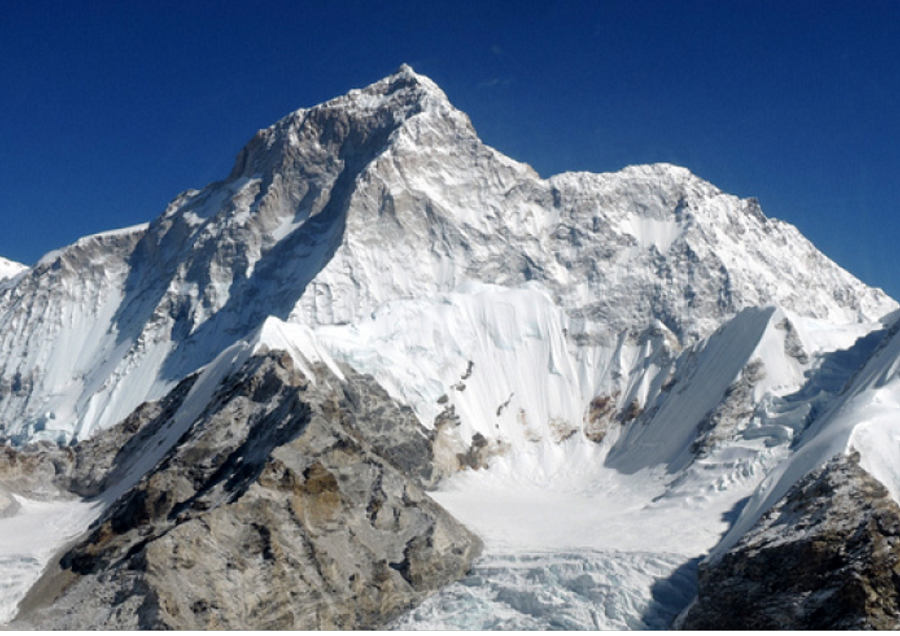 The 5th highest mountain on earth at 8,463 meters/27,765ft, Makalu is Sanskrit for “Great Black” – a name for Shiva, the Hindu god of creative destruction, as here is one of his homes. You’re looking face on the Southeast Ridge (the right side in sun, the left side in shade), which is the primary climbing route.
The 5th highest mountain on earth at 8,463 meters/27,765ft, Makalu is Sanskrit for “Great Black” – a name for Shiva, the Hindu god of creative destruction, as here is one of his homes. You’re looking face on the Southeast Ridge (the right side in sun, the left side in shade), which is the primary climbing route.
You’re seeing the entire south side of Makalu in Nepal, while the north side is in Tibet with the border running along the horizon crestline. Makalu Base Camp lies below the bottom right corner of the photo. This was taken at over 20,000 feet on our approach from Everest and Lhotse – 12 miles away – during our Himalaya Helicopter Expedition, or “HHE.”
Everyone is understandably entranced with Everest – yet the other 8,000 meter Himalayan giants are breathtakingly magnificent in their own right, and you can see why with Makalu. On our HHE, we go to them all! (Glimpses of Our Breathtaking World #37 photo ©Jack Wheeler)
GGANTIJA
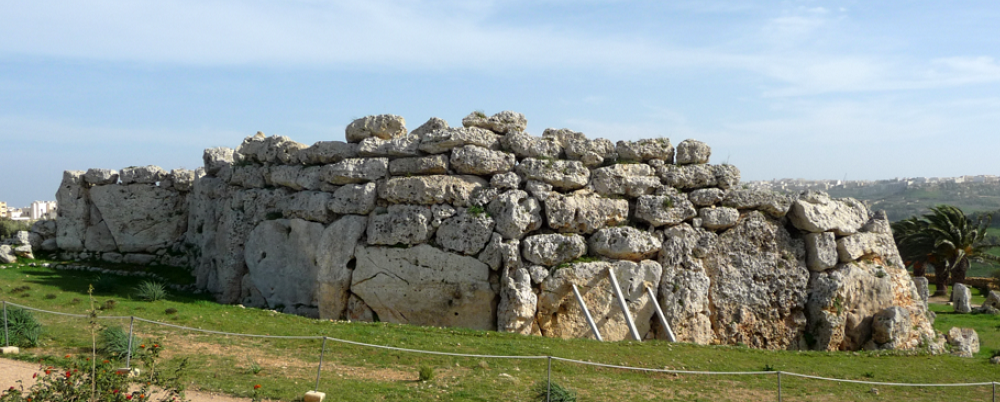 The small European island country of Malta in the Mediterranean south of Sicily and close to the north coast of Africa is where civilization emerged from the Stone Age.
The small European island country of Malta in the Mediterranean south of Sicily and close to the north coast of Africa is where civilization emerged from the Stone Age.
The story begins over 7,000 years ago, when a handful of Stone Age tribes in Sicily rafted 55 miles south to land on the twin islands of Gozo and Malta. They lived in caves, then huts, fished, hunted, farmed with primitive tools for they had no metal – and over a period of more than a thousand years taught themselves how to construct massive buildings of stone.
This is the Temple of Ggantija (zhee-gan-tee-zha). Built almost 6,000 years ago (around 3600 BC), it is the oldest free standing structure in the world. It is older than the pyramids in Egypt by a thousand years, older than Stonehenge by 15 centuries. The enormous stones weighing several tons were cut from the limestone bedrock with tools of stone and antler horn for they had no metal, and moved using small round-cut rocks as ball bearings for they had no wheels.
These folks figured out all by themselves how to build this and other massive stone temples to their gods and goddesses so many millennia ago. Nobody taught them. They were the first. (Glimpses of Our Breathtaking World #166 photo ©Jack Wheeler)
PRINCESS RING ISLET
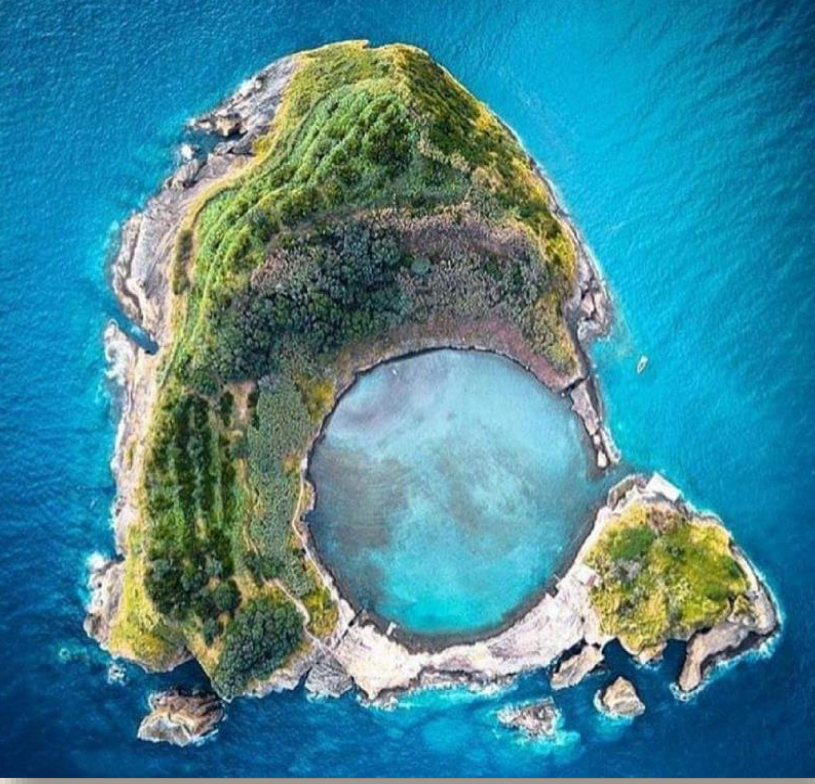 This is real, it actually exists as you see it. Princess Ring Islet is a small collapsed volcanic cone with a circular sunken crater. Talk about an awesome swimming hole. It’s several hundred yards off São Miguel Island in the Azores – and is just one of the many totally cool places we see in our exploration of Atlantic Paradises this June.
This is real, it actually exists as you see it. Princess Ring Islet is a small collapsed volcanic cone with a circular sunken crater. Talk about an awesome swimming hole. It’s several hundred yards off São Miguel Island in the Azores – and is just one of the many totally cool places we see in our exploration of Atlantic Paradises this June.
At that time of year, the ocean around Princess Islet is filled with migrating whales and dolphins. The Azores are one of the world’s greatest whale-watching sites. You’d be very hard-pressed to find a cleaner, safer, more peaceful, more benign, and more astonishingly beautiful part of our planet than the Azores. And with more perfect weather.
The rest of the world and its craziness doesn’t exist here. Don’t you owe it to yourself and the one you love to escape here for at least a short time? Of course you do. Just click on Atlantic Paradises to see how you can. Once you see all the pictures, I frankly don’t see how you can resist! (Glimpses of our breathtaking world #193)
FLASHBACK FRIDAY – SHACKLETON
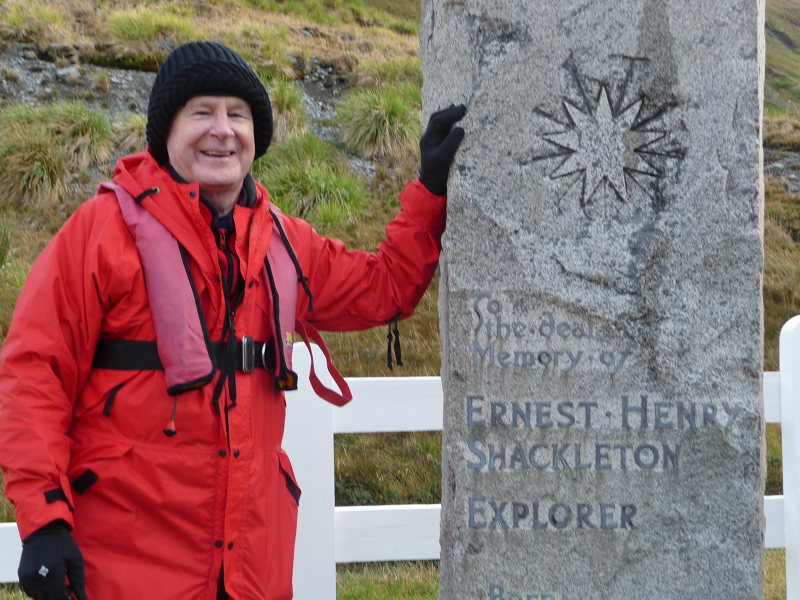 You likely read the new story this week of the extraordinary discovery of Antarctic legendary explorer Ernest Shackleton’s ship The Endurance 10,000 feet deep at the bottom of the Weddell Sea: Ernest Shackleton’s Sunken Ship Endurance Found 107 Years Later (3/09).
You likely read the new story this week of the extraordinary discovery of Antarctic legendary explorer Ernest Shackleton’s ship The Endurance 10,000 feet deep at the bottom of the Weddell Sea: Ernest Shackleton’s Sunken Ship Endurance Found 107 Years Later (3/09).
Perhaps you read my account of his incredible exploits in Endurance (April 2013). I thought to commemorate the ship’s discovery with this photo of me at Shackleton’s gravesite at the abandoned whaling station of Grytviken on the Antarctic island of South Georgia.
Shackleton was the most heroic arctic explorer of them all. The famous eulogy at his funeral says it all:
(Glimpses of Our Breathtaking World #192 photo ©Jack Wheeler)For scientific discovery, give me Scott
For speed and efficiency of travel, give me Amundsen
But when disaster strikes and all hope is gone
Get down on your knees and pray for Shackleton
HALF-FULL REPORT 03/11/22
This is Russian Defense Ministry spokesman Igor Konashenkov announcing on Russian television yesterday (3/10):
“The purpose of Pentagon-funded biological research in Ukraine was to establish a mechanism for the clandestine distribution of deadly pathogens. The United States is training migratory birds to migrate from Ukraine to Russia and distribute bacteriological weapons.”This is not a Babylon Bee satire joke. This is an actual news broadcast by the Russian government to the Russian people – vast numbers of whom are gullible enough to believe it. What’s tragically amazing is that far too many American conservatives are gullible enough to believe it too.
A good friend of mine is a scientist who has worked in surveillance biolabs. After laughing our heads off over this latest example of pathetic Russian propaganda, he explained:
THE SHERMAN TANK THAT’S STILL THERE
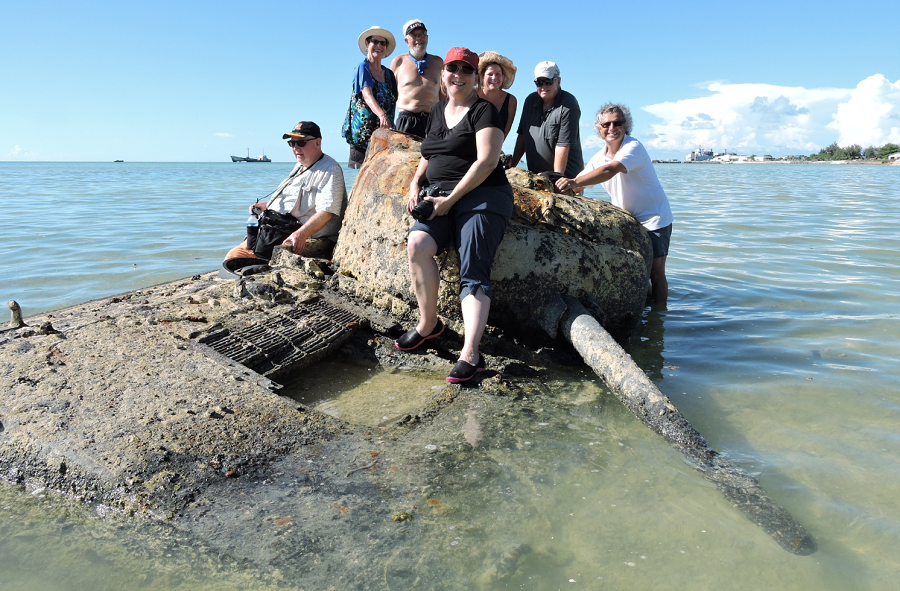 The horrifically heroic Battle of Tarawa was fought November 20-23, 1943, with the US Marines determined to take the entrenched Japanese – which they did, both sides suffering ghastly losses. The Marine amphibious force assaulted the Japanese garrison on the small island of Betio in Tarawa Atoll of the Gilbert Islands – now the country of Kirimati.
The horrifically heroic Battle of Tarawa was fought November 20-23, 1943, with the US Marines determined to take the entrenched Japanese – which they did, both sides suffering ghastly losses. The Marine amphibious force assaulted the Japanese garrison on the small island of Betio in Tarawa Atoll of the Gilbert Islands – now the country of Kirimati.
The spearhead of the assault was led by the Marine’s Charlie Company, 1st Corps Tank Battalion and its M4-A2 Shermans on what was codenamed Red Beach. One particular Sherman sank a few yards offshore and lies there to this day. It’s easy to wade out and clamber upon it, as these friends of mine did when I brought them there in 2016.
We hear a lot about “climate change” causing “the oceans to rise.” But as you can see, the sea level at Tarawa has been the same for the past 77 years. (Glimpses of Our Breathtaking World #124 Photo ©Jack Wheeler)
MANICHEAN MOMENTS
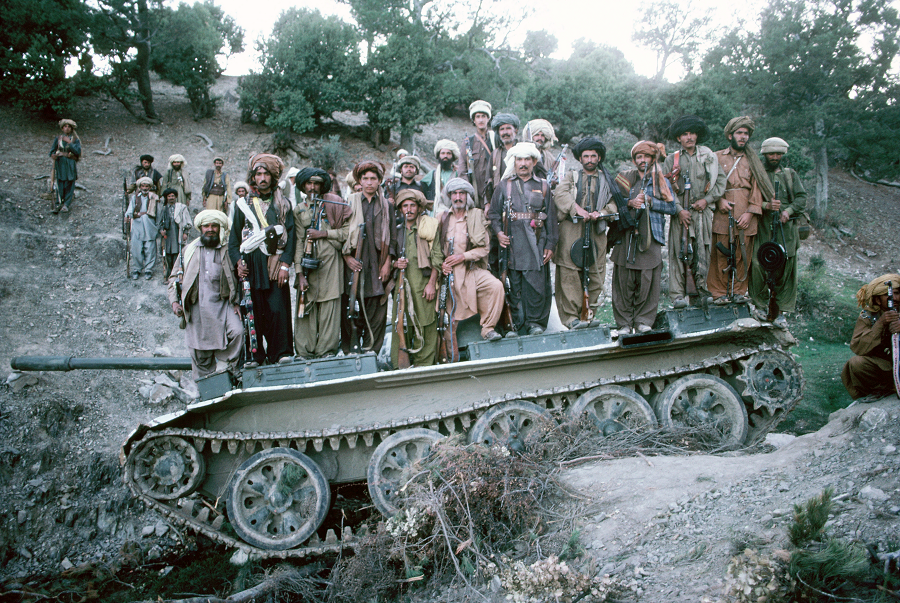 Most often, there are valid perspectives on either side of a dispute, not a simple divide between good and evil with no gray areas in between. That was not the case in Afghanistan in the 1980s. The Mujahaddin you see here were fighting a morally just war against immoral atrocity. The war waged by the Afghan Mujahaddin to liberate their country from Soviet Russian conquest was a Manichean Moment.
Most often, there are valid perspectives on either side of a dispute, not a simple divide between good and evil with no gray areas in between. That was not the case in Afghanistan in the 1980s. The Mujahaddin you see here were fighting a morally just war against immoral atrocity. The war waged by the Afghan Mujahaddin to liberate their country from Soviet Russian conquest was a Manichean Moment.
There is another Manichean Moment taking place right now in Ukraine. Once again, Russia is attempting to subjugate an innocent country with bombs and immoral atrocity. This is good vs. evil once more. There is no gray area. Those on the side of Ukraine and Zelensky fighting for freedom are on the side of moral decency. Those on the side of Russia and Putin are not. They are on the side of irredeemable evil.
That’s why, when I see photos of Ukrainian freedom fighters atop Russian tanks they captured, it reminds me of those I took of Afghan freedom fighters atop Russian tanks they captured. The Mujahaddin defeated Russia a third of a century ago. The Ukrainians will defeat Russia now. Good will triumph over evil once more. (Glimpses of Our Breathtaking World #191 Afghanistan photo ©Jack Wheeler)
A SECOND CHANCE
The Soviet Union was disintegrating, and I was worried about the nukes. Every democracy leader I talked to in all the Soviet Republics declaring their independence didn’t want them. The problem, of course, was Russia. What was needed was an Anti-Nuclear Movement to guarantee that Russia would not keep its nukes, thus remaining a nuclear threat to America and the West.
I argued for the Reverse Golden Rule – Do Unto Others Before They Do It Unto You. “What would the Russians demand if they had won the Cold War and not us?” I asked. “That’s where our demands should start,” I argued, albeit agreeing that Russia would need a nuclear deterrent against China – but that should be in mutual operation with us.
Alas, that was tragically not to be. Now, all these years later with Putin’s catastrophic miscalculation in Ukraine, we have a second chance.
PORTRAIT OF A DEFEATED MAN
He’s suddenly turning old before our eyes. He’s made the most catastrophic mistake of his life – so catastrophic it has destroyed his country. Worse, there is a part of him that realizes he has the soul of an inhuman monster. His soul is being eaten alive from the inside out. You can see it in his eyes.
He knows he’s lost. He’s down to ordering his soldiers to murder children. What happens now?
MADEIRA MAGIC
There may no island of more astonishing beauty and more ideal climate than Madeira, nor a place of more idyllic peace, where the rest of the world and its calamities are far, far away. Yet it’s not far at all from the US, a few hours’ flight across the Atlantic from the East Coast.
Here is where Winston Churchill came, to relax, paint, and escape from the woes of war.
Here is where you can simply enjoy life in blissful beauty – if you join me in our exploration of Atlantic Paradises, June 24 to July 2. Look at the pictures, ponder the value of what you’ll see, do, and experience. I hope I’ll be hearing a, “Hey, Jack, I’m in!” from you soon.

